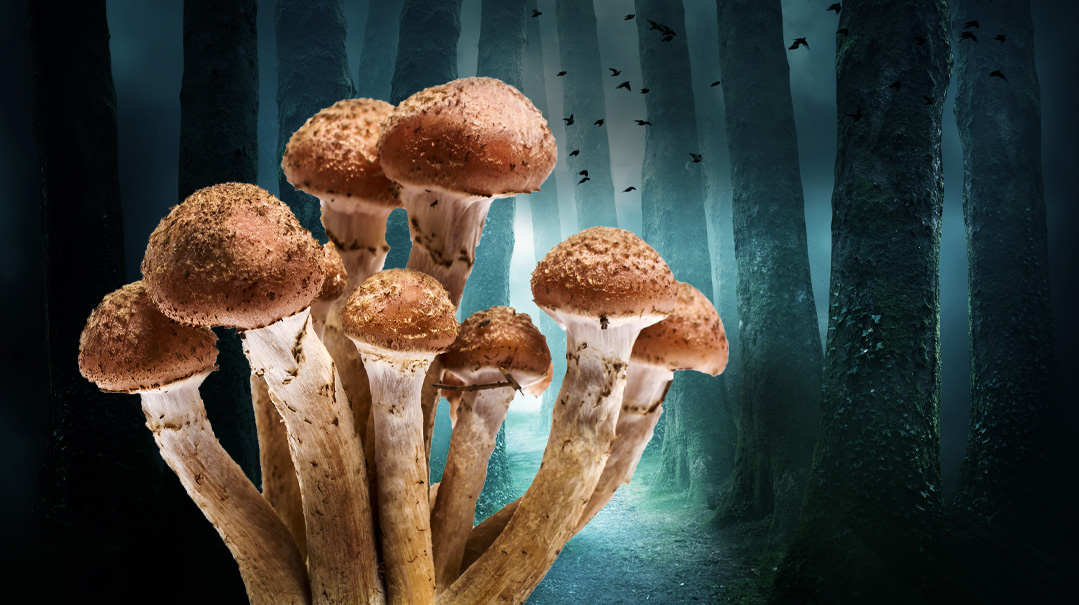The Fungus Among Us

How does a fungus get to be so big? And what exactly is a fungus, anyway?

What weighs about the same as 200 blue whales, is as big as the Mall of America, and yet is almost invisible? Oh, yeah, it’s also several thousand years old, alive, and parasitic.
This is no joke.
It’s the Humongous Fungus, a single specimen of Armillaria ostoyae, or more simply, a honey mushroom that’s been growing for thousands of years. The Humongous Fungus (its nickname) spreads out over about four square miles (the size of some international airports!) in Oregon’s Malheur National Forest. Its weight is estimated at 7,500 tons (half the weight of the Brooklyn Bridge!), though some scientists think it could be as heavy as 35,000 tons. And it’s still growing, expanding outward under the ground in thin networks of mycelia, root-like filaments. Yikes!
So, how does a fungus get to be so big? And what exactly is a fungus, anyway?
Much Ado About Mushrooms
Question: What’s not a plant, not an animal, not a bacterium, and yet is still alive?
Answer: Fungus. A fungus is part of the family that includes the mushrooms on your supper table (and some less familiar mushrooms, too), the yeast in your challah (and other kinds of yeast), and microorganisms like the mold growing in your shower (eww).
Although mycology, the study of fungi, is a branch of botany (the study of plants), fungi are actually more closely related to animals than plants — at least genetically speaking. They’re found all over the world. Most of them have never been properly studied and classified, but there are one and a half to five million species of them. And they’re essential to the environment: they play a role in the decomposition of dead things and replace important nutrients in the soil. We eat some of them. They can be used in various medicines. Researchers are always finding other fascinating uses for them. And lots of them are extremely poisonous.
But most of them are not the size of a mall. So how did the Humungous Fungus grow so large?
Oops! We could not locate your form.






